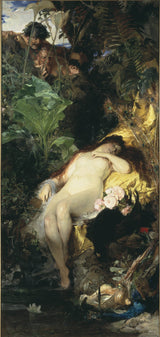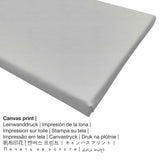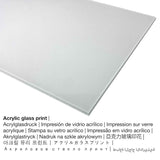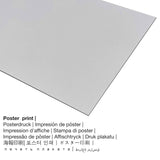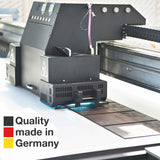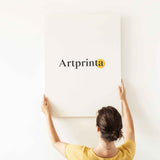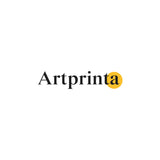Julius Kronberg, 1875 - Nymph na Fauns - mbipụta nka mara mma
Ụtụ gụnyere. Mbupu gbakọrọ na ndenye ọpụpụ.
Summary
In 1875 the male painter Julius Kronberg created this 19th narị afọ work of art. The original creation was made with the size: Height: 269 cm (105,9 ″); Width: 130 cm (51,1 ″). Today, the piece of art is included in the digital collection of National Museum nke Stockholm. Obi dị anyị ụtọ ikwu na nke a ngalaba ọha A na-enye mpempe nka site n'ikike nke Nationalmuseum Stockholm na Wikimedia Commons.: . N'elu nke ahụ, nhazi a na-abanye Eserese usoro na akụkụ ruru nke 1: 2, nke pụtara na ogologo bụ 50% mkpụmkpụ karịa obosara.
Additional artwork information from the museum's website (© - Nationalmuseum Stockholm - National Museum nke Stockholm)
English: Nymph and Fauns, Julius Kronberg’s breakthrough work, was one of the most popular paintings in Sweden in the 1870s. Kronberg had studied in Düsseldorf and Munich and particularly admired the art of Austrian historical painter Hans Makart. Makart’s love of using colour and sumptuous props to bold effect is clearly reflected in Kronberg’s depiction of the hunting nymph secretly being watched by two fauns. The painting had been shown in Munich to great acclaim in 1875, but when it was shown in Stockholm in 1876, it caused a sensation. Some felt the subject was far too sexually provocative. Other critics saw the painting as an absolute masterpiece that immediately had to be acquired by Nationalmuseum. One of the painting’s greatest admirers was a young August Strindberg, who at that time earned a living as an art critic. In the newspaper Dagens Nyheter, he wrote a lyrical review hailing Kronberg as a “triumphant artist”. Strindberg felt that the Munich School that Kronberg represented stood for a modern style of painting where effects of colour and light were the main feature, while the subject was of subordinate importance. Jaktnymf och fauner, som blev Julius Kronbergs genombrottsverk, hörde till de mest uppmärksammade målningarna i Sverige på 1870-talet. Kronberg hade studerat i Düsseldorf och München och beundrade särskilt den österrikiske historiemålarens Hans Makarts måleri. Makarts förkärlek för starka koloristiska effekter och överdådiga rekvisita avspeglas tydligt i Kronbergs skildring av jaktnymfen som i smyg betraktas av de två faunerna. Målningen hade med framgång visats i München 1875. När den 1876 visades i Stockholm växlade reaktionerna kraftigt. Somliga uppfattade motivet som allt för sexuellt utmanande. Andra bedömare menade att målningen var ett fullödigt mästerverk som omedelbart måste förvärvas av Nationalmuseum. En av målningens största beundrare var den unge August Strindberg, som vid denna tid försörjde sig som konstkritiker. I Dagens Nyheter skrev han en lyrisk recension där Kronberg beskrevs som en ”måleriets triumfator”. Strindberg menade att Münchenskolan, som Kronberg representerade, stod för ett modernt måleri där färgeffekterna var huvudsaken medan motivet i sig var av underordnad betydelse.
Ozi nka
| Iberibe aha nka: | "Nymph and Fauns" |
| Nhazi nka: | sere |
| Otu sara mbara: | nkà nke oge a |
| Time: | 19th narị afọ |
| Emepụtara na: | 1875 |
| Afọ nka: | 140 afọ |
| Nha izizi: | Ogologo: 269 cm (105,9 ″); Ogologo: 130 cm (51,1 ″) |
| Ụlọ ihe ngosi nka / ebe: | National Museum nke Stockholm |
| Ebe ngosi nka: | Stockholm, Obodo Stockholm, Sweden |
| ibe weebụ: | National Museum nke Stockholm |
| License: | ngalaba ọha |
| Site n'aka: | Nationalmuseum Stockholm na Wikimedia Commons |
Tebụl nchịkọta ihe nkiri
| Aha onye nka: | Julius Kronberg |
| Aha ndị ọzọ: | Julius Kronberg, Kronberg Julius, Kronberg Johan Ferdinand, Kronberg Julius Johan Ferdinand |
| okike onye nka: | nwoke |
| Obodo onye nka: | Swedish |
| Ọrụ: | onye na-ese ihe, onye nkuzi mahadum |
| Obodo obibi: | Sweden |
| Nhazi nke onye nka: | omenkà nke oge a |
| Oge ndu: | 71 afọ |
| Afọ ọmụmụ: | 1850 |
| Amụrụ na (ebe): | Karlskrona, Blekinge, Sweden |
| Afọ nwụrụ: | 1921 |
| Obodo ọnwụ: | Stockholm, obodo Stockholm, Sweden |
Họrọ ngwa ngwaahịa gị
The product dropdown menu ofers you the possibility to choose the size and material of your choice. You can choose among the following product customization options:
- Mbipụta nke aluminom: An Aluminium Dibond print is a print with an outstanding depth. A non-reflective surface structure creates a fashionable impression. The white and bright sections of the artpiece shine with a silk gloss, however without glow. This direct print on Aluminum Dibond is the most popular entry-level product and is an extremely sophisticated way to showcase artworks, since it draws focus on the replica of the artwork.
- Mbipụta kanvas: The canvas direct print is a printed cotton canvas mounted on a wooden stretcher. It produces the extra look of three-dimensionality. A canvas creates a cosy and pleasing look. Your canvas of your favorite artpiece will allow you to transform your customized fine art print into a large size artwork like you would see in a gallery. Canvas prints are relatively low in weight, which means that it is quite simple to hang the Canvas print without extra wall-mounts. Canvas prints are suited for all kinds of walls.
- Glass acrylic e biri ebi (nwere ezigbo mkpuchi iko): A glossy acrylic glass print, often described as a plexiglass print, changes the artwork into amazing décor and forms a great alternative option to canvas or dibond fine art replicas. Your own version of the work of art is made with the help of modern UV printing machines. It makes vibrant and impressive colors.
- Akwụkwọ mmado na ihe kwaaji: The Artprinta poster print is a printed canvas with a granular finish on the surface. Please keep in mind, that depending on the size of the poster print we add a white margin of approximately 2 - 6cm round about the painting, which facilitates the framing with your custom frame.
Nkọwapụta ngwaahịa
| Nkewa bipụta: | nka nka |
| Usoro mmeputakwa: | dijitalụ mmeputakwa |
| Produzọ mmepụta: | UV kpọmkwem obibi |
| Production: | emere na Germany |
| Stockdị ngwaahịa: | na mmepụta ihe |
| A na-atụ aro iji ngwaahịa eme ihe: | mgbidi gallery, ime ụlọ |
| Ndepụta: | nhazi ihe osise |
| Oke akụkụ: | ( Ogologo: obosara) 1: 2 |
| Mmetụta akụkụ: | ogologo bụ 50% mkpụmkpụ karịa obosara |
| Ngwa ngwaahịa dị: | akwụkwọ mmado (akwụkwọ kwaaji), mbipụta ọla (aluminium dibond), mbipụta iko acrylic (nke nwere ezigbo mkpuchi iko), mbipụta akwụkwọ. |
| Mbipụta kanvas (akwa akwa n'elu etiti ihe ndọtị) ụdị nha dị iche iche: | 20x40cm - 8x16 ", 30x60cm - 12x24", 40x80cm - 16x31", 50x100cm - 20x39", 60x120cm - 24x47", 80x160cm - 31x63", 90-x180cm |
| Mbipụta iko acrylic (nwere ezigbo mkpuchi iko) nhọrọ nha: | 20x40cm - 8x16", 30x60cm - 12x24", 40x80cm - 16x31", 50x100cm - 20x39", 60x120cm - 24x47" |
| Mbipụta akwụkwọ mmado (akwụkwọ kwaaji): | 30x60cm - 12x24", 40x80cm - 16x31", 50x100cm - 20x39", 60x120cm - 24x47" |
| Nhọrọ Dibond (ihe alumnium) nhọrọ: | 20x40cm - 8x16", 30x60cm - 12x24", 40x80cm - 16x31", 50x100cm - 20x39", 60x120cm - 24x47" |
| Nhazi nke nka nka: | mbipụta nka na-enweghị isi |
Ihe dị mkpa: We try what we can to depict the art products in as much detail as possible and to illustrate them visually. Although, the colors of the print products, as well as the imprint can diverge marginally from the representation on your device's monitor. Depending on your settings of your screen and the condition of the surface, not all colors will be printed 100% realistically. Since all art prints are printed and processed by hand, there might also be slight variations in the size and exact position of the motif.
© echebe nwebiisinka - Artprinta (www.artprinta.com)

